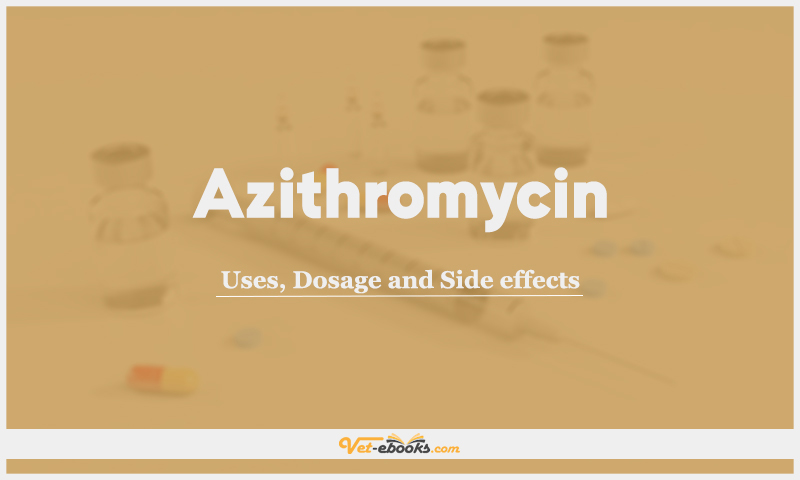Azithromycin: Uses, Dosage and Side Effects
Overview
- Time-dependent macrolide that binds to the 50S bacterial ribosome (like erythromycin), inhibiting peptide bond formation.
- Azithromycin has a longer tissue half-life than erythromycin, shows better oral absorption and is better tolerated in humans.
Uses of Azithromycin
- Alternative to penicillin in allergic individuals as it has a similar, although not identical, antibacterial spectrum.
- Useful in the management of the respiratory tract.
- Mild to moderate skin and soft tissue, and non-tubercular mycobacterial infections.
- Is used to treat chlamydophilosis in birds, but it has not proved possible to eliminate Chlamydia felis from chronically infected cats using azithromycin, even with once daily administration.
- Also reported for the treatment of Babesia gibsoni and Cytauxzoon felis.
- In addition to its antimicrobial activity, it has been reported for use in reducing gingival hyperplasia secondary to ciclosporin administration in cases where cessation of treatment is not possible.
Dose of Azithromycin in Dogs and Cats
Dogs:
- 5–10 mg/kg p.o. q24h. May increase dosing interval to q48h after 3–5 days of treatment.
Cats:
Various regimes are suggested:
- 5–10 mg/kg p.o q24h for 3–5 days.
- 5 mg/kg p.o. q24h for 2 days then every 3–5 days up to a total of 5 doses.
- For upper respiratory tract disease: 5–10 mg/kg p.o. q24h for 5 days then q72h.
Drug Dosage Calculator
You Should Give:
Side Effects of Azithromycin in Dogs and Cats
- vomiting, cholestatic hepatitis, stomatitis and glossitis may be seen.
Contraindications of Azithromycin in Dogs and Cats
- Avoid in renal and hepatic failure in all species.
Some Notes:
- Azithromycin activity is enhanced in an alkaline pH; administer on an empty stomach.
- Azithromycin may increase the serum levels of methylprednisolone, theophylline and terfenadine. The absorption of digoxin may be enhanced.
- It is active against Gram-positive cocci (some Staphylococcus species are resistant), Gram-positive bacilli, some Gram-negative bacilli (Haemophilus, Pasteurella), mycobacteria, obligate anaerobes, Chlamydia, Mycoplasma and Toxoplasma. Some strains of Actinomyces, Nocardia and Rickettsia are also inhibited. Most strains of the Enterobacteriaceae (Pseudomonas, Escherichia coli, Klebsiella) are resistant.
Tip
Do You Want To Increase Your Veterinary Knowledge and Practical Skills?
You Can Now Browse and Download +3000 Books For Veterinary Professionals & Students Online.
Download Veterinary Books





















